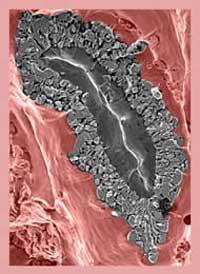Very thin superconductor
Superconductors can transport electricity without resistance, i.e. without energy loss, but most materials become superconductors around absolute zero. Many physicists dream of looking for superconductors at high temperatures, and magnesium diboruro could be one of them. If this material or similar is achieved to be superconductors at a slightly higher temperature, a laboratory leap could be made to the industry. Nitrogen is produced at -196°C and is relatively inexpensive to achieve. Therefore, researchers look for superconducting materials around this temperature.

But temperature is not the only limit of magnesium diboruro. In order to build electronic circuits it is necessary to make layers of magnesium diboruro and so far it has not been possible. But it seems that researchers at the State University of Pennsylvania have succeeded. Ultra-thin and smooth layers of magnesium diboruro have been prepared, cheap and simple.
Previously developed methods have not allowed the production of good quality soft layers. Evaporation of boron layers in the magnesium atmosphere allows to obtain layers of good superconductors but of rough surface. Rough surfaces are an important barrier to the circuits to be built. Conversely, by simultaneously encoding magnesium and boron vapors, the opposite occurs. Bad superconductors of smooth surface are obtained.
Pennsylvania researchers evaporate magnesium fragments using a coil at about 700°C. Subsequently, magnesium vapor reacts at high pressure and in the hydrogen atmosphere with a boron and hydrogen compound. In these conditions perfect layers of magnesium diboruro are formed in the dishes. It seems that the secret of success is hydrogen. Prevents contamination of layers by magnesium oxide and increases superconductivity.
Additional information:
Increased metal superconductors
Foundations of the electric revolution
Very hot superconductivity
Buletina
Bidali zure helbide elektronikoa eta jaso asteroko buletina zure sarrera-ontzian











